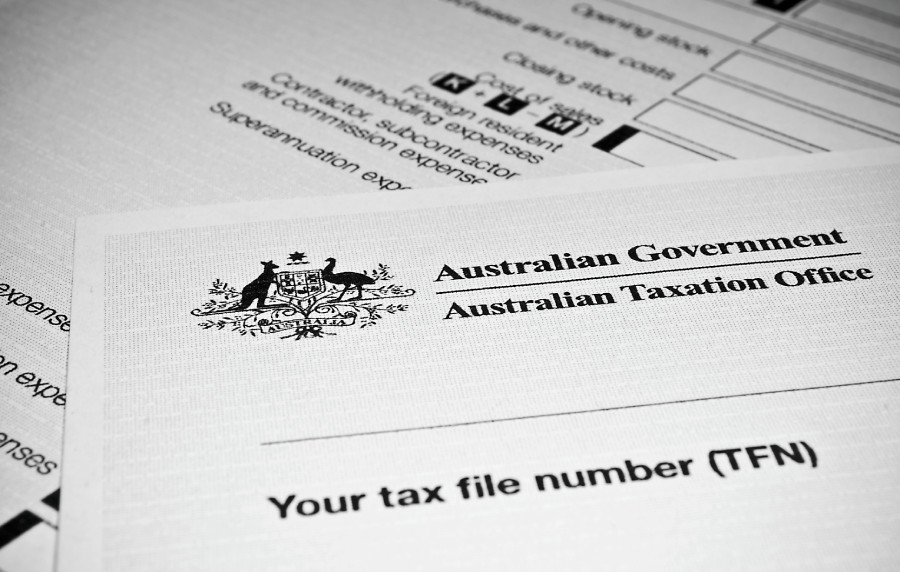Home Loan Guide – Complete Roadmap From Deposit to Debt-Free
1. Why This Guide Matters

2. Saving the Deposit
First Home Super Saver Scheme (FHSS). One of the most powerful deposit-building tools for first-timers is the FHSS. It lets you salary-sacrifice up to $15,000 per year (capped at $50,000 total) into super and then withdraw it to buy your first home. Because those contributions are taxed at just 15 percent—rather than your full marginal rate—you get to keep significantly more of each dollar you save. On top of that, you earn deemed “investment earnings” at a fixed rate (hovering just above 6 percent lately), which dwarfs many ordinary savings accounts. In fact, by using the FHSS instead of a bonus-saver account you can wind up roughly $7,000 better off over time—just from tax and earnings benefits alone .
Of course, the FHSS cap means you’ll still need additional savings. Many first-home buyers blend their FHSS contributions with a standard high-interest savings account (bonus-saver rates have been around 4½ percent) to hit their deposit target faster. Be mindful that once you’ve reached the $50 k cap, every extra dollar you park in a bank account is after tax—and taxed at your marginal rate—so the FHSS remains the most tax-efficient slice of your deposit strategy .
Standard Savings & Bonus Accounts. If you prefer the simplicity and instant access of a bank account, look for a “bonus-saver” that rewards you for regular deposits and no withdrawals. Right now, the top bonus accounts sit near 4.5 percent, which is competitive—but still lags the FHSS overall return once you factor in tax advantages. Even so, having a separate savings pot for FHSS and another for your “everyday” deposit builds discipline and ensures you always have funds ready when valuations, inspections or unexpected costs pop up.
Mixing & Matching Strategies. Beyond super and savings, many buyers tap into a parental guarantee (“Bank of Mum and Dad”) to cover a small portion of their deposit. With a formal guarantee lodged against the family home, lenders may let you borrow up to 95 percent—or even 98 percent if you’re a single parent—without paying Lenders Mortgage Insurance. Guarantee structures vary by lender, so your broker will steer you toward the banks with the friendliest parental-guarantee policies.
For those without family support, consider gifted deposits (a one-off cash gift formally documented), drawdowns from investments, or even short-term equity loans from relatives. Whatever mix you choose, the goal is the same: combine the tax-efficiency of super, the flexibility of a bonus account, and—where possible—the leverage of a parental guarantee to get you over the line sooner.
Putting It All Together. A typical strategy might be: salary-sacrifice $15 k into super each year for three years; stash an extra $5 k annually into a bonus saver; and secure a 5 percent parental guarantee to avoid LMI. That trifecta delivers a $50 k FHSS pool, $15 k in a bank account, and the confidence to bid up to 95 percent LVR—all without blowing your budget on insurance premiums.
By blending these three pillars—FHSS, bonus-saver discipline and parental guarantees—you’ll hit your deposit target faster, pay less tax, and step up to auction or private sale with real confidence.

3. Talk to a Mortgage Broker Early
Step one is always: contact your mortgage broker. It may seem tempting to plug numbers into an online calculator or head straight to your own bank’s website, but these shortcuts can leave you in the dark about what you can truly afford, which government grants you’re eligible for, or where hidden fees might trip you up. By engaging a broker at the outset—ideally as soon as you even start thinking about buying—you gain a trusted adviser who’s on your side, armed with a deep knowledge of the lending landscape and the power to streamline each step of the journey.
A quality broker compares roughly 2,000 loan products from more than 35 lenders, all in one place. Rather than you spending hours clicking through individual bank sites, your broker filters the entire market on your behalf, zeroing in on the handful of home-loan options that match your deposit size, your income, and your long-term goals. They’ll surface not only headline interest rates but also valuable extras—things like fee waivers, cashback offers, discounted valuations and offset-account incentives—that branch customers rarely see.
Beyond chasing the cheapest rate, brokers specialise in pinpointing government-backed concessions. From the First Home Guarantee (formerly the First Home Loan Deposit Scheme) to state-level stamp-duty waivers and grants, each scheme comes with its own eligibility rules and application processes. Your broker keeps up with the ever-changing criteria—single-parent carve-outs, regional-buyer incentives and special deals for key workers—so you won’t miss out on thousands of dollars in savings simply because you didn’t know what to ask for.
Perhaps most importantly, brokers act as the early warning system for credit-file gremlins. A dormant credit card, an old store-account balance, or an inadvertent late payment can knock you out of the running at the 11th hour. Your broker pre-screens your file and flags any potential issues before a lender ever sees them. That gives you the time to close unused accounts, settle small debts, or explain anomalies—rather than finding yourself reeling when your application stalls or is rejected.
All of this expert guidance comes at no direct cost to you. Instead of paying the broker’s fee out of your own pocket, the lender covers it once the loan settles. And modern broker platforms make life even easier: you can upload pay slips, bank statements and IDs through secure portals, track every milestone from conditional approval to settlement online, and tap into real-time support whenever questions pop up. No more waiting in queue at a branch, no more playing phone-tag with a bank officer.
Working with a broker doesn’t just save you time and money; it keeps you focused and confident. Instead of wondering whether you’ve chased down the best deal, you can concentrate on choosing the right suburb, inspecting your shortlist of properties, and refining your offer strategy. With an experienced mortgage broker in your corner from day one, you minimise surprises, accelerate approval, and set yourself up to bid or negotiate with genuine certainty—crucial advantages in today’s fast-paced real-estate market.
SMSF Mortgage Broker for All Business Owners
Make An Enquiry
Connect with innovative, professional mortgage brokers! Tap the orange button to call us or the blue button to message us now.
Speak With A Broker
We’ll find the perfect loan that matches your situation so that you can be confident you have the best deal. Speak with us today!
Loan Approved
Let’s look at the options, and find the one that suits you! We’ll get your loan approved and make the whole process easy!
Your Guide to Financing Put Simply by
a Commercial Mortgage Broker
There are four main ways Australians are financing equipment or machinery for their businesses right now.
This will help you compare and evaluate the different business equipment loan types you might best qualify for.
An equipment finance broker will guide you to making the best choice.
Tailored Personal Loan Options
Get a personal loan for financing business equipment or machinery. Fast approval for loans with repayments to suit you.
Equity Release via a Mortgage
The equity in your home can be released, thereby transforming your property into cash. Use the cash to buy business machinery.
Business or Commercial Finance
Fuel your business growth with our customized commercial finance solutions. Competitive rates and tailored support for small and large enterprises.
Private Lending & Investor Finance
Explore our private lending options for quick access to funds. Flexible terms and personalized service, bringing your financial goals within reach.

4. Pre-Approval—Fully Assessed vs Desktop
Some banks will cheerfully email you a “desktop approval” within minutes of entering a few figures online. It sounds great—until you read the fine print. Those quick approvals are generated by an algorithm that hasn’t actually seen your payslips, bank statements or tax returns. Instead, it makes a rough estimate of your income, your expenses and your borrowing capacity, then spits out a conditional letter loaded with caveats. One hiccup—a phone bill paid late two years ago, a dormant credit card you forgot to close, or a sudden change in your living expenses—and the lender can pull the rug out from under you at the last minute.
A fully assessed pre-approval, by contrast, is a genuine green light: you’ve handed over every piece of documentation up front—three to six months of bank statements, recent payslips, your latest tax return, details of all debts and living costs—and the lender’s credit team has already run the numbers. It’s the loan equivalent of a dress rehearsal, where every line of dialogue has been memorised and every prop has been checked.
Here’s why opting for a fully assessed approval matters:
- Locked-in capacity for 90 days. Once granted, your approval is valid for three months, regardless of how rates fluctuate. If official variable rates tick up during that period, your borrowing limit remains exactly what it was the day your broker submitted the paperwork. That stability can make the difference between winning at auction and having your loan limit snipped as soon as a rate rise is announced.
- Real visibility over conditions. Desktop letters often arrive with pages of small print: hidden loan-to-value ratio caps, restrictions on overtime or bonus income, or clauses that exclude certain debt types. A fully assessed pre-approval surfaces every potential snag in one go, giving you the chance to tidy up your credit file—close unused cards, settle small balances or document one-off expenses—well before settlement day.
- True “auction-ready” status. If you’re eyeing an auction, timing and certainty are everything. With a fully assessed approval in hand, you can bid knowing that your finance is genuinely secured. You won’t face frantic calls to your broker from the auction house or last-minute panic when the bank asks for additional documents.
- Faster path to formal approval. Because most of the legwork is already done, moving from pre-approval to formal approval is often smoother and quicker. The lender has already vetted your file; the valuation is the main remaining step. That means less waiting, fewer follow-up calls and a shorter window between signing the contract and settlement.
- Stronger negotiating position. Sellers and agents take buyers with fully assessed pre-approvals more seriously than those with desktop letters. When they see you’ve jumped through the lender’s hoops months in advance, your offers carry extra weight—and may even prompt the vendor to entertain lower bids or more flexible settlement terms.
To secure a fully assessed pre-approval, lean on your mortgage broker’s expertise. They’ll gather every required document, lodge a complete application, and chase the lender for updates. Instead of relying on a flimsy, algorithm-driven desktop letter, you’ll have a solid, 90-day approval that shields you from credit surprises and rate volatility. In a fast-moving market, having that genuine “auction-ready” status is your ticket to bidding and negotiating with real confidence.
5. Working Out Your Real Purchase Budget
It’s easy to see a lender’s headline figure and assume that’s the price range you can shop in—“Here’s a $500 000 loan!”—but the reality is a lot more nuanced. Your true purchase budget must factor in three separate components: the loan amount, your deposit, and the additional upfront costs that banks won’t lend against.
First, look at the loan vs deposit split. If your lender pre-approves you for a $400 000 loan, that doesn’t automatically translate into $400 000 of property value; you still need to supply the gap up to your chosen purchase price. In practical terms, if you want a $500 000 house, you must have $100 000 on hand as a deposit.
Next come the transaction costs—the often-overlooked expenses that can add another 5 to 7 per cent on top of your purchase price. Stamp duty is the biggest ticket item and varies by state, property type and, in some cases, whether you’re a first-home buyer. You’ll also need conveyancing or legal fees (typically $1 000–$2 000), building and pest inspections ($400–$600), lender application or valuation fees (up to $400), and potentially mortgage registration fees. Add it all up and a $500 000 home might actually cost you closer to $535 000 once duty and disbursements are included—and yes, you need to fund those from your own pocket.
Finally, don’t forget buffers and stress tests. Lenders assess your capacity using an “assessment rate” that’s higher than the current advertised rate—often by 2 per cent or more—to ensure you can sustain repayments if interest rates rise. A broker will model different rate scenarios (for example, testing your budget at 6 per cent or 7 per cent) and factor in living-expense buffers so you’re not left house-rich but cash-poor.
A seasoned mortgage broker pulls all of these pieces together for you. They’ll start with your genuine borrowing capacity, subtract the deposit you have saved, outline all the associated costs, and then calculate the maximum purchase price that still keeps you comfortable. That means no more weekend open-home binges in suburbs you can’t afford—and no nasty surprises when your dream property pushes you beyond your true budget. Armed with a realistic figure, you can confidently target the right neighbourhoods, zero in on properties that fit your finances, and bid or make offers with full clarity about what you’ll actually need to settle.


6. House Hunting & Short-Listing
One huge mistake many buyers make is falling in love with the wrong property online, only to discover on inspection day that it’s either out of budget, poorly configured or in a suburb that doesn’t meet their needs. To avoid this kind of heartbreak, it’s essential to lock in crystal-clear success criteria before you ever set foot in an open house.
First, short-list three suburbs. Rather than scattering your search across the entire metro area, pick three pockets that match your lifestyle needs and price range. Consider proximity to work or school, access to public transport, local amenity like parks and shops, and future growth prospects. Narrowing your search to three areas keeps you focused and prevents decision fatigue.
Next, decide whether you want a house, townhouse or apartment, and pin down how many bedrooms, bathrooms and living zones you genuinely need. Do you work from home and need a study nook? Are you planning kids or hosting frequent visitors? A three-bedroom townhouse with an extra downstairs living room might suit you better than a four-bedroom house with no dedicated workspace. List your “must-haves” versus “nice-to-haves” and be ruthless—if a yard is non-negotiable or a second bathroom vital, make sure every property you view ticks those boxes.
Then, cross-check prices in the recently sold section of Domain or realestate.com.au—and use only sales within the past three months. Fast-moving markets can jump double digits in under a year, so stale comparables from six months ago may paint an outdated picture. Instead, compile a patch-specific database of three to five comparable sales per suburb: note sale price, number of bedrooms, land size and any special features like a new kitchen or pool. This gives you an accurate “value map” so you know if a listing is underpriced, fair or overpriced before you make an offer.
For example, if you’re chasing a four-bedroom house in Mosman on an $800 k budget, you’ll likely be disappointed—most freestanding homes there start well above that. In that case, expand your criteria: consider a three-bedroom townhouse in a neighbouring suburb, or look further out where four-bedroom homes exist within your range. Your broker can help run suburb-level borrowing capacity checks, too, so you never waste time on properties you can’t finance.
By short-listing suburbs, clarifying your property type and bedroom needs, and relying on up-to-date comparable sales data, you’ll transform your house-hunting from a random stroll through listings into a targeted, efficient search. With these clear filters, you can walk into every inspection knowing exactly what to look for, which means fewer weekends wasted and a faster path to finding—and securing—your ideal home.
7. Auctions vs Private Treaty
When buying via private treaty, you negotiate terms directly with the vendor. You can include conditions—most commonly a building and pest inspection clause— to protect yourself if issues crop up after signing. That means you only pay for inspections on properties you’re serious about and can use an unfavourable report to renegotiate or walk away with your deposit intact .
By contrast, auctions are unconditional: once the hammer falls, the contract is binding, with no subject-to-finance or inspection clauses. You must have your finance and building-and-pest reports fully organised before auction day, because there’s no opportunity to attach conditions afterwards . Typically, the only negotiable auction terms are the settlement period (often 30–90 days) and the deposit percentage.
Success at auction comes down to preparation and strategy. Decide your walk-away price in advance—your absolute maximum bid—and stick to it. Plan when to enter the bidding (some buyers open with a bold “rocket bid,” others wait to gauge competition) and how much each increment will be. Register with the auctioneer early, introduce yourself to build rapport, and position yourself in the crowd where you can read other bidders’ cues. Knowing the number of registered bidders can help you time your bids and avoid overpaying.
Whether you choose private treaty or auction, the key is clear criteria, solid finance, and a well-rehearsed game plan so you can act decisively—and confidently—when it matters most.


8. LowDeposit Paths and Government Guarantees
Not every lender participates in the various government-backed guarantee schemes each year, so deposit requirements and LMI thresholds can differ widely from one bank to the next. A lender outside the panel might insist on a 10 per cent deposit plus Lenders Mortgage Insurance, which means you’ll need to save an extra chunk to cover both the shortfall and the hefty insurance premium. By contrast, a panel lender in the First Home Guarantee (formerly the First Home Loan Deposit Scheme) may let you borrow with just 5 per cent deposit—and waive the LMI entirely, saving you thousands up front.
For eligible single parents, the Family Home Guarantee can be a game-changer: it allows approved lenders to accept a 2 per cent deposit without LMI, provided you meet the scheme’s criteria around dependents and income. There’s also the Regional First Home Buyer Guarantee, which helps buyers in specified regional postcodes access the same low-deposit benefits. Each of these schemes carries its own eligibility rules, caps on the number of places available nationally, and application processes.
Because panels shuffle annually—with some major banks choosing to sit out certain schemes and specialist lenders stepping in—trying to navigate it all alone is a recipe for over-saving or missing out entirely. That’s where your mortgage broker comes in. They have up-to-the-minute intel on which lenders are offering spot guarantees, how many spots remain in each scheme, and which banks are offering fee waivers, cashback incentives or valuation discounts alongside their low-deposit products.
Your broker will map your personal circumstances—employment type, income, family situation and property location—against every available guarantee. They’ll prepare and lodge your scheme application alongside your loan paperwork, ensuring you tick every eligibility box before settlement. If one lender’s guarantee quota has filled up, they’ll simply switch to the next best option, rather than leaving you stranded after weeks of paperwork.
By leaning on specialist guarantee pathways, many first-home buyers can secure finance with just a 5 per cent deposit—or even 2 per cent if you qualify as a single parent—without paying LMI. That means you hit the auction block or write your private-treaty offer confident you’ve maximised every dollar of government support and minimised your out-of-pocket costs. With your broker steering you to the right lender panel, you avoid the pitfalls of over-saving for schemes you’re ineligible for, and fast-track your way to a binding contract—all on a deposit you can realistically achieve.
Get started with our easy to use calculator
To help you learn more we’ve put together a RATE CHALLENGE calculator
that will allow you to understand if you currently have a good deal. Contact us
for a full refinance conversation and you could save!
This service is provided by your Free Mortgage Broker.
Refinance
Loan Repayment
9. From Contract to Formal Approval & Settlement
Once your offer is accepted, the real work—and excitement—begins. Here’s how to navigate the journey from signed contract to key handover in clear, manageable steps:
a) Lodging the Formal Loan Application
As soon as you’ve signed the contract of sale, deliver it to your mortgage broker. They’ll lodge your formal approval application with the lender, attaching the signed contract plus any outstanding documents—typically an up-to-date payslip, three to six months of bank statements and details of any debts or living expenses. The bank will order a property valuation to confirm it supports the purchase price, and may request the building-and-pest report if your contract included that clause. If that report flags serious issues, you can renegotiate or—if covered by a subject-to-building-and-pest clause — withdraw and recover your deposit from the seller .
b) From Conditional to Unconditional (Formal Approval)
Once the lender is satisfied with your documentation and the valuation, they’ll issue formal (unconditional) approval and draw up the loan contract. At this point, you’ll sign the loan documents and return them via your broker or directly to the lender’s solicitor. Because so much of the vetting was done at pre-approval, this transition often takes just a few days.
c) Entering Settlement
With formal approval in hand, your conveyancer prepares the title transfer and mortgage registration documents. They’ll also set up a shortfall account (sometimes called a “settlement shortfall account”) into which you deposit the balance of your purchase price plus stamp duty and legal fees. This ensures all funds are on hand at settlement.
d) Pre-Settlement Inspection
A few days before settlement, you’re entitled to a pre-settlement inspection to verify the property is in the same condition as when you signed the contract. If you discover defects, leftover rubbish or damage—such as staging holes in walls or scuffs on floors—notify your conveyancer immediately. They’ll request the agent to have the seller rectify these issues before settlement day .
e) Settlement Day
On settlement day, everything happens electronically: the lender’s solicitor transfers funds to your conveyancer’s trust account, who then pays the vendor and discharges any existing mortgage if you’re refinancing. If you contributed a deposit or have a guarantor, those funds clear from the shortfall account. Once the exchange is confirmed, your broker—or occasionally the conveyancer—will call to congratulate you. The agent then releases the keys, and the property is officially yours .
By following these steps—timely document submission, clear communication between broker and conveyancer, pre-settlement inspection diligence and proper funds management—you’ll transition smoothly from contract to settlement and step confidently into your new home.

10. Managing the Loan DaytoDay
Offset accounts, redraw facilities and extra-repayment options are powerful because interest on a 30-year loan compounds relentlessly. Dropping a $500 000 mortgage from 4½ per cent to 3.75 per cent cuts your repayments by about $218 a month and saves roughly $78 000 in interest over the term—before you make any extra payments.
Offset Accounts. An offset account is a transaction account linked to your mortgage. Every dollar you hold in offset reduces the daily interest charged on your loan. For example, with $10 000 sitting in offset, you’re only charged interest on $490 000 of a $500 000 balance. Treating everyday savings and salary credits as mini mortgage repayments can shave years off your loan and tens of thousands off your interest bill.
Redraw Facilities. When you make extra repayments, a redraw facility lets you access those funds again if needed—say for an emergency or a renovation—without refinancing. This flexibility encourages you to pay more when you can, safe in the knowledge that your cash isn’t locked away forever .
Payment Frequency. Switching from monthly to fortnightly or weekly repayments effectively adds an extra month’s payment each year. Over decades, that small change can cut years off the loan and save substantial interest.
Credit-Limit Discipline. Lenders factor in your total available credit—credit cards, lines of credit or store accounts—as potential debt. Even if you zero out your balance each month, a $10 000 unused credit-card limit can reduce your borrowing power by up to $50 000. Closing or lowering limits on unused accounts is a quick win for both current repayments and any future refinancing.
By combining these strategies—maximising offsets, using redraw wisely, increasing payment frequency and pruning unused credit—you harness the full suite of home-loan features. While interest on a 30-year loan compounds relentlessly, these tools ensure every dollar you earn works harder to chip away at your debt.
11. Building & Tapping Home Equity
Home equity is simply your property’s current market value minus the outstanding loan balance. So, if your home’s worth $800 000 and you owe $200 000, you hold $600 000 in equity. Lenders will typically allow you to borrow up to 80 per cent of the property’s value—including your existing debt—so you could access $440 000 while leaving a 20 per cent buffer. You can tap that equity via a line of credit, top-up or renovation loan to fund home upgrades, a second property or large purchases—but remember, every dollar you redraw adds back to your mortgage and must be repaid.


12. Refinancing—When Loyalty Doesn’t Pay
Banks rarely reward existing customers; they save the sharpest pricing for new money. If you’ve held the same loan for more than two years, chances are you’re paying more than you need to. A refinance can sound like extra work, but the savings almost always outweigh the costs.
Typical refinancing expenses include the lender’s discharge fee (usually $100–$400), government title and registration fees ($200–$300), plus any valuation or application charges the new lender may impose. Even if you pay $1,500 in combined fees, that’s a drop in the ocean compared with the lifetime interest savings you can unlock.
Consider a $500,000 mortgage at 4.5 per cent versus the same loan at 3.75 per cent. Dropping the rate by just 0.75 percentage points cuts your monthly repayment by about $218. Over a 30-year term, that change alone saves roughly $78,000 in interest—before you factor in any extra repayments. If you continue paying at the old higher repayment level, you’ll shave years off the loan and can boost total savings to around $133,000, effectively buying yourself financial freedom years sooner.
You can also use a cash-out refinance to access equity: borrow more than your outstanding balance, take the difference in cash, and apply it to renovations, a second property or debt consolidation. Just bear in mind that borrowing above 80 per cent LVR may trigger Lenders Mortgage Insurance, which adds to your upfront costs. And if you extend your loan term without increasing repayments, you’ll dilute the savings.
Your broker will model different scenarios—comparing break-costs on any fixed portions of your existing loan, weighing upfront fees against ongoing rate gaps, and mapping out how long it takes to recoup costs through lower repayments. They’ll also alert you to any cashback offers or fee waivers the new lender might throw in, further tipping the balance in your favour.
In short, refinancing every two to three years keeps your loan honest. The process demands gathering documents and signing new contracts, but the payoff is a sharper rate, leaner repayments and potentially tens of thousands of dollars back in your pocket over the life of the loan. If you’ve been loyal to one bank for too long, it might be time to shop around and reward yourself instead.
13. Investment Loans — Risk, Reward & How Banks View Them
If you plan to live in the property, the loan is classified as owner-occupied; if you’re going to rent it out, the loan becomes an investment facility. Lenders generally cap investment loans at 90 per cent LVR (including any Lenders Mortgage Insurance) and price them slightly higher than owner-occupier debt, because historical data show rental-backed loans carry a greater risk of default.
The key attraction for investors is tax deductibility: interest on an investment loan, plus many associated costs such as valuation fees, loan application charges and depreciation on fixtures, can be offset against your assessable income. That tax benefit can significantly improve your cash flow—sometimes turning what looks like a marginal yield into a solid annual return. Just remember that any fees you pay, from ongoing account fees to specialist lender charges, may also be deductible, so keep meticulous records.
However, two major risks accompany investment lending: capital loss and vacancy. Property values can dip, potentially falling below your purchase price for years. With a 90 per cent LVR, you have only a 10 per cent buffer to absorb any market downturn before you’re “underwater.” Vacancy risk hits you in real time—every week your property sits empty you cover expenses from your own pocket. Always stress-test your numbers for empty periods (six to eight weeks isn’t uncommon between tenants) and run repayment capacity at higher “stress” rates—typically 2 per cent above today’s rate—to ensure you can service the debt even if rates rise.
To manage these risks, many investors start with an interest-only period, which maximises deductions and keeps repayments lower while you build rental history. You might also establish a line of credit secured against equity to cover maintenance or gaps in cash flow. Above all, approach property investment with the same rigour you’d apply to your own home loan: know your lender’s policies, build in a generous buffer and stress-test for worst-case scenarios before you commit.


14. Using Super—SMSF Property Loans in Plain English
Investing through a Self-Managed Super Fund (SMSF) has exploded in popularity, with more than 610,000 SMSFs holding $1.1 million members between them. Unlike a personal loan, an SMSF property loan uses a limited-recourse borrowing arrangement (LRBA): your fund sets up a separate custodian trust that holds the property title, while the lender’s security is confined solely to that asset. Other SMSF assets remain quarantined, safeguarding your broader retirement nest egg if repayments ever falter .
Key compliance rules are strict. First, the acquisition must pass the ATO’s sole-purpose test—the property must exist solely to provide retirement (or death) benefits to fund members. For residential assets, you cannot live in or rent the property to a member or related party; commercial premises may be leased to related parties only at market rent. Third, you need to maintain adequate liquidity in your SMSF—most lenders expect at least $200,000 in super to cover loan serviceability if rental income dips .
SMSF loans demand heftier deposits—typically 20–30 per cent—and carry higher interest rates than standard home loans. Documentation is more onerous: you’ll supply trust deeds, custodian-trust documents, three to six months of SMSF bank statements, recent tax returns, audit certificates and rental-income estimates . Since major banks exited the SMSF lending market in 2018, specialist lenders dominate; securing the right deal hinges on partnering with an SMSF-savvy broker who knows which niche lenders will underwrite your arrangement .
While you cannot redraw equity in an SMSF property the way you might with a personal mortgage, trustees often establish an offset account inside the fund. By channelling surplus rental income and additional contributions into that offset, you effectively “tap” equity: every dollar held reduces the daily interest charged on your loan balance, generating usable cash without breaching LRBA rules .
Borrowing capacity in super is also calculated differently. Lenders assess your SMSF’s super contributions plus rental income, without factoring in personal living expenses or external debts. That separation can unlock extra leverage—frequently more borrowing power than personal applications—though you’ll often hit a cash buffer in the fund before maxing serviceability .
Because SMSF structures are complex and heavily regulated, assembling the right team is crucial: an experienced broker, a specialist accountant, a savvy financial planner and a property lawyer. Together, they ensure compliance, maximise borrowing power, and align your SMSF property purchase with both ATO rules and your retirement goals. With proper guidance, an SMSF property loan can be a potent wealth-building vehicle—leveraging super to buy high-value assets while protecting personal finances and accelerating your path to a robust retirement.
15. Annual Reviews & Staying on Track
Your home loan isn’t a “set-and-forget” financial product—it’s a long-term commitment that needs regular check-ins to make sure it still suits your needs. Interest rates shift, your income and expenses evolve, and life goals change. That’s why you should review your mortgage at least once a year, even if you’re happy where it is. Here’s what to cover in your annual loan health-check:
Compare Your Current Rate
Lenders frequently roll out new discounts and special offers for new customers, while existing borrowers often stay on older, higher rates. If your loan has been with the same bank for more than two years, you’re almost certainly overpaying. A rate drop of just 0.5 per cent on a $500 000 loan can shave hundreds off your monthly repayments and tens of thousands in total interest. Ask your broker to check the market, including any new lender cash-backs or fee waivers, and see if a refinance makes sense.Evaluate Loan Features & Structure
Think beyond just the interest rate. Loan features—offset accounts, redraw facilities, fixed-vs-variable splits and extra-repayment options—can save you substantial interest over time. If you’ve never used your redraw facility, for example, you could redirect extra cash into your mortgage to reduce principal faster. Conversely, if you prefer certainty, consider fixing a portion of your loan for stability, while leaving some in a variable tranche to capture rate cuts.Check Your Credit Profile
Even after settlement, your borrowing power remains linked to your credit file. Unused credit limits on cards and lines of credit count as potential debt and can drag down your capacity if you decide to refinance or top up later. Close or reduce any redundant accounts, and ensure all balances are paid off. This simple step can boost your leverage by tens of thousands without touching your core mortgage.Align with Your Evolving Goals
Your life stage and priorities can shift year to year. If you’re saving for school fees, renovating, or eyeing an investment property, you may need to restructure your loan. Pulling in additional debt—like consolidating a car loan or credit-card balance—can make sense but only if you commit to an accelerated repayment plan; otherwise, you risk extending that debt over 30 years.Plan for Rate Rises
Use your broker’s stress-testing tools to model repayments at higher interest rates—typically 2 per cent above today’s level—to ensure you can still cover payments comfortably if the Reserve Bank hikes rates. This exercise prevents unpleasant surprises and gives you confidence that your budget can absorb future shocks.
By carving out an hour each year to run through these five review steps, you’ll keep your mortgage working hard for you. Annual reviews aren’t just about saving a few bucks; they’re about maintaining flexibility, protecting your borrowing power, and aligning your home loan with whatever stage of life you’re in—so you stay firmly on track toward debt-free living.


Ready to Start the Conversation?
Let’s make your home loan work harder for you. Whether you’re looking to reduce your repayments, tap into your equity, or just want a better deal, I’m here to help.
Get in touch today to book a free refinance review — and let’s find out what your mortgage could be doing for you.
Conclusion — Your Path to DebtFree Living
From the first chat with a broker through settlement and beyond, each step truly flows into the next. By contacting your mortgage broker early, you gain a trusted adviser who compares thousands of loan options, steers you to the right government schemes and flags any credit-file gremlins before they derail your deal .
Use government schemes like the First Home Super Saver Scheme—salary-sacrifice up to $15,000 a year (capped at $50,000) in super, taxed at just 15 per cent, with deemed earnings around 6 per cent—to supercharge your deposit savings . Pair that with a fully assessed, 90-day auction-ready pre-approval so you can bid or negotiate with confidence, knowing your payslips, tax returns and statements have already passed credit checks .
When it’s time to inspect, thoroughly engage building-and-pest reports and walk through every tap, switch and wall crack—this diligence stops nasty surprises post-contract .
After settlement, managing day-to-day matters: leverage offset accounts, redraw and extra-repayment facilities so the power of compounding interest works for you instead of against you, saving thousands over the term .
Every year, review your loan—check your rate, compare features, consider splitting fixed and variable portions, and prune unused credit limits. If you roll consumer debt into your mortgage, commit to accelerated repayments to avoid dragging short-term debt over 30 years .
With the right strategy and ongoing guidance, the Australian dream of owning your home outright can be closer—and far less stressful—than it first appears.
Ready to Take the Next Step?
Contact Us Today!



